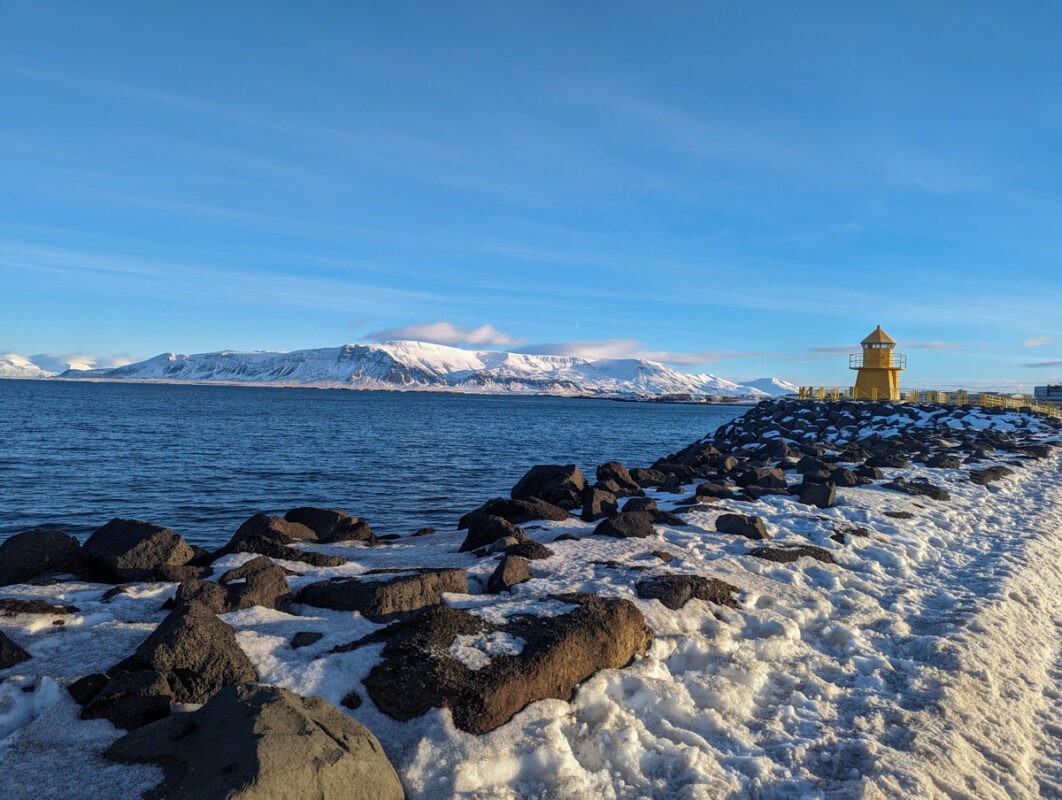Is Reykjavik worth visiting? Here are all my thoughts on a 2024 city break to the capital!
With thermal waters enticing tourists, enough quirky museums to fill any kind of city break and gorgeous harbour views, Reykjavik certainly sees its fair share of tourists; but some visitors to Iceland forgo visiting the capital for Iceland’s natural wonders.
Sure, the geysers, waterfalls and volcanoes of the Land of Fire and Ice should certainly be on your Iceland itinerary, but Reykjavik’s unique culture and effortlessly cool vibe make it a city break destination in its own right.
I’ve visited Reykjavik twice, and adore the city both as a base to explore the country and for the attractions in its own right.
I’ve been to Iceland twice – one trip was hosted by Jet2 Holidays, with some activities hosted by Visit Iceland. All opinions are my own.
Is Reykjavik worth visiting?
Absolutely, the capital of Iceland is worth visiting and spending a few days in while you’re in the country.
It’s a quirky, charismatic city with plenty to do and that’s very welcoming to tourists.
Volcano update February 2024: We flew to Keflavík International Airport a week after the volcano eruption in February. It was business as usual both at the airport and in the city.
The Blue Lagoon was closed, but it reopened while we were there. None of the recent volcano eruptions on the Reykjanes Peninsula have affected Reykjavik (or anywhere other than Grindavik or the Blue Lagoon, for that matter).
Reasons to visit Reykjavik
Here are my top reasons to visit Reykjavik!
1. It’s easily accessible

Most tourists flying into Iceland will do so via the Kevlaflik International Airport, which sits around 45-60 minutes from Reykjavik.
Flights from all over Europe and North America land in Kevlaflik, and once you arrive, you’ll just need to hop on a quick bus transfer to Reykjavik.
Jet2 offer flights to Reykjavik from various UK cities, including Birmingham, Stansted, Leeds Bradford, Manchester and Bristol.
We flew from Bristol Airport at 7:15 am and arrived in Reykjavik before noon (they’re in the same time zone).
Plus, if you booked a Jet2 package holiday, your transfer is included in your package (along with a Northern Lights tour!).
2. Unique history
Of course, Iceland’s nature is a huge draw to the nation and is why so many tourists from all over the world come to visit it each year.
But, it should come as no surprise that a rugged island in the North Atlantic, once populated by Vikings, has a totally unique history – and the heart of all this history? Reykjavik!
For me, the best way to discover Icelandic history was on a Reykjavik walking tour.
We did a tour with citywalk.is, and our guide, Ási, fascinated us with tales of how the first Vikings arrived in the country, how Reykjavik built up as a city and how people have survived in such a volcanic, volatile environment over the centuries.
It’s also worth popping into the National Museum of Iceland, which has exhibits dating from the founding of the country up to the modern day.
3. A glimpse into Icelandic culture
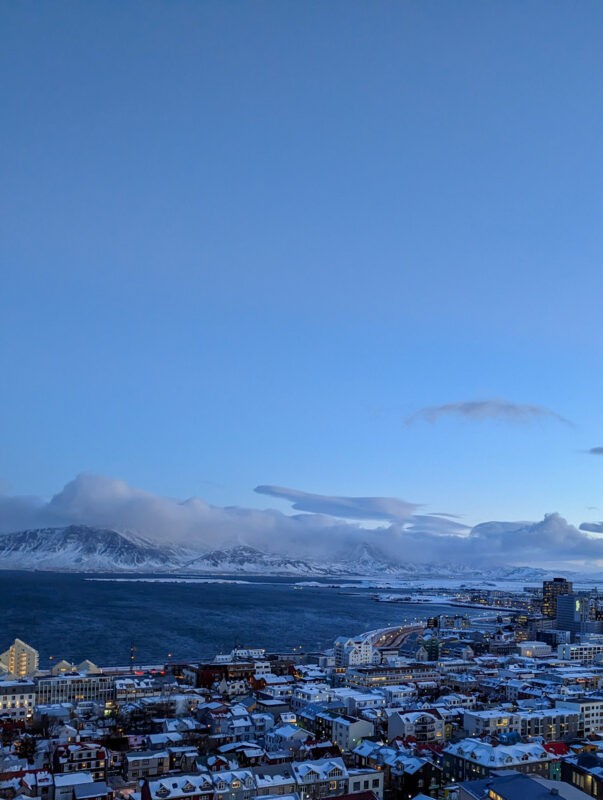
Reykjavik is where 2/3s of Iceland’s population lives, so it’s no surprise that it’s the best place to experience Icelandic culture!
On our CityWalk.is a walking tour, Ási beguiled us with tales of Iceland’s festivals, customs and traditions.
He told us how more than half of the population of Iceland believes in elves, how as the population of Iceland is so small there is a website in Iceland to check how related you are to someone (mainly used for dating!) and why no Icelandic people eat fermented shark!
Which leads me on to my next point…
4. Fantastic food and coffee
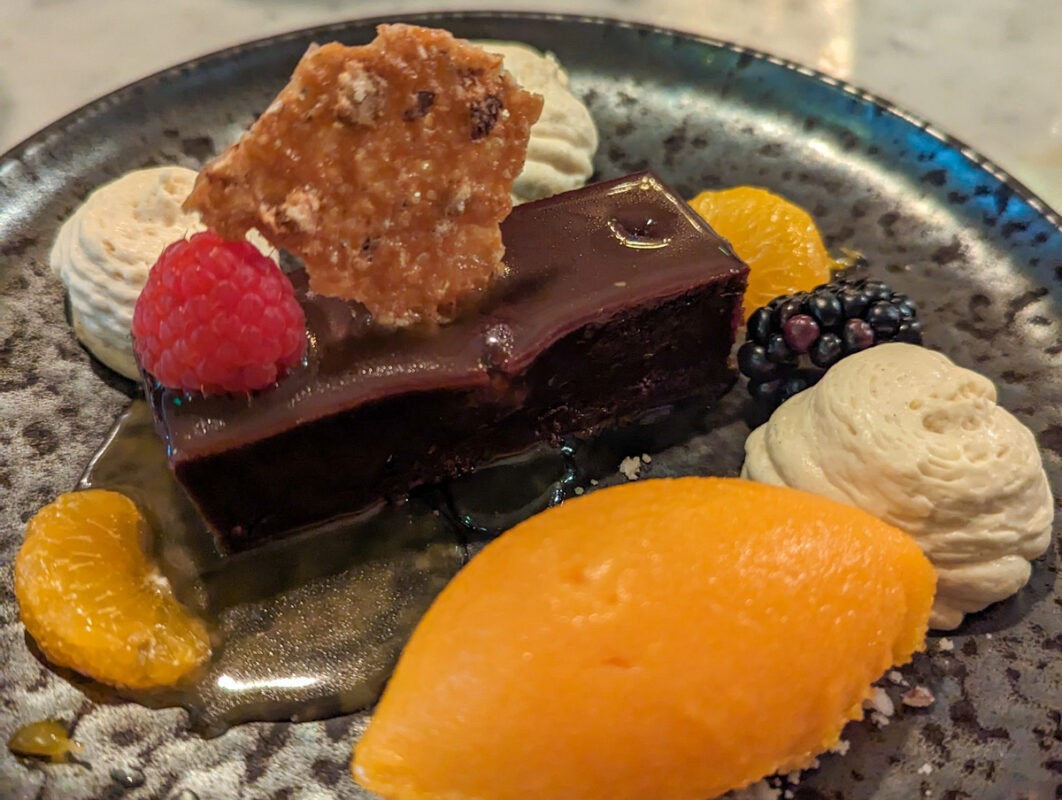
“Only tourists eat traditional Icelandic food, like fermented shark, now” Ási said. “We don’t eat it now there are other options – we ate what we had to for survival in the past”.
Indeed, traditional Icelandic food – sheep testicles, whale meat and the dubious fermented shark, which is left in its own urine for months to get rid of the toxicity – isn’t quite to everyone’s tastes (certainly not for me, as a vegetarian!).
However, in recent years, modern Icelandic cuisine has thrived. Fish is on the menu at nearly all restaurants, but it also excels with vegetarian options. While prices are high, ingredients are incredibly high quality (which is mind-boggling really, when you consider that quite a lot is imported – although some is grown in greenhouses!).
Our favourite pick was Kopar Restaurant. Sitting by the harbourside, this eatery fuses contemporary flavours from around the globe; we had broccoli tempura, arancini balls, mushroom Wellington and a chocolate brownie for dessert! (Our bill came to £130 GBP with a bottle of wine).
If you want a real treat, check out Dill Restaurant. Inspired by the nature of Iceland, this restaurant serves up delicious tasting menus – it even has a Michelin star.
5. Ample museums

Weather not cooperating when you’re in Iceland?
There are dozens of incredible museums in the capital, ranging from the traditional (National Museum of Iceland, various art galleries, Maritime Museum), to the immersive (the Saga Museum which focuses on Viking history or the Whales of Iceland exhibition) to the downright weird (the Icelandic Phallological Museum!).
I’ve not actually been, but I’ve heard Perlan to be highly recommended. This is an immersive museum that brings the wonders of Iceland right to Reykjavik, with a Northern Lights display an ice cave, exhibitions about animals and more!
Not a museum person? There are plenty more indoor attractions you can take in in Reykjavik too. In the Lava Show, real lava (at 1100C temperature) is poured into a room, and you’ll see how it reacts with different substances as well as learn all the facts about Icelandic volcanoes you’ll ever need to know.
Or, head to FlyOver Iceland for an interactive flight over the country’s best nature. You’ll see roaring waterfalls, geysers, glaciers and its coastline; I’ve heard that Icelanders have gone into this display and come out crying because they didn’t know their country was so beautiful!
6. Budget thermal baths
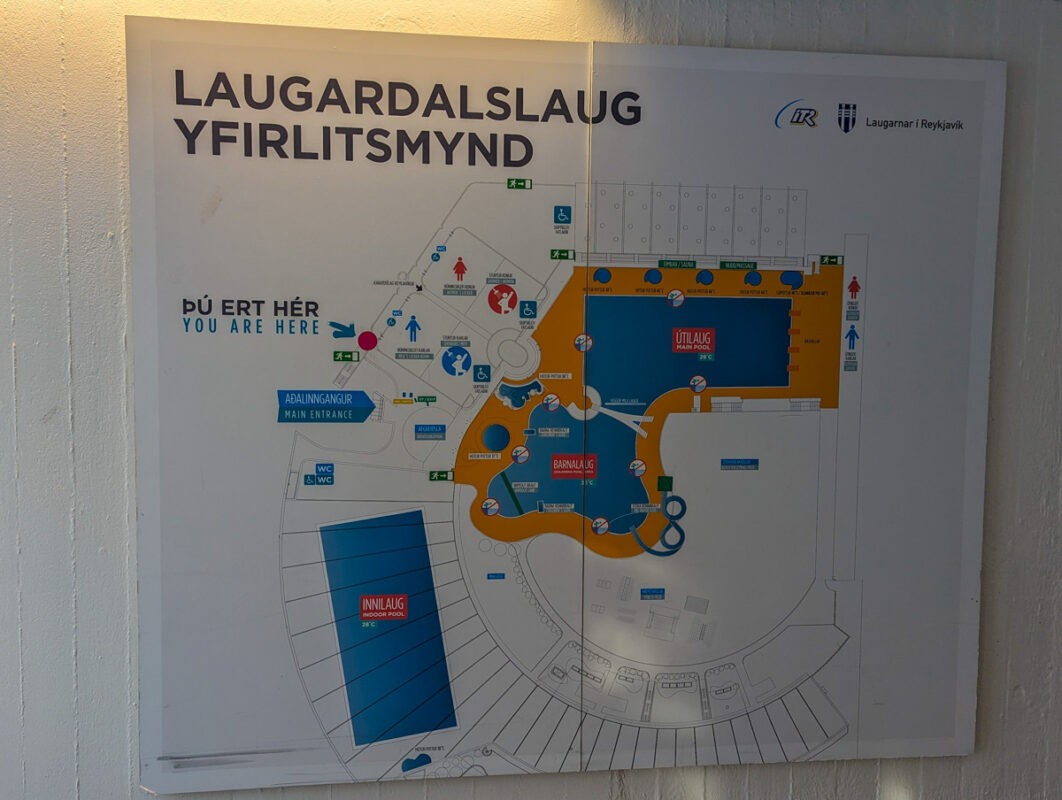
Sure, the Blue Lagoon (when it’s open) and Sky Lagoon are great, but they’re not cheap!
What if I told you that you could have a similar experience without even leaving Reykjavik?
The city’s brimming with public thermal baths. While they have more of a “leisure centre” vibe than the tourist-centric Blue and Sky Lagoon, you’ll still be bathing in thermal water and get to enjoy hot tubs at a range of temperatures, cold water dunk tanks, saunas, steam rooms and full-length swimming pools!
I’ve been to four of these thermal baths:
- Laugardaslaug: This is the largest of all of Reykjavik’s thermal baths and is best for swimming.
- Sundhollin: This is the oldest of all of the spas in Reykjavik and is in a city centre location. It’s quite small, so I’d recommend avoiding out-of-peak times.
- Arbaejarlaug: This is a bus ride from the city, but has a wonderfully chilled-out feel with a network of different pools. This one was my favourite.
- Vesturbaejarlaug: This is located around a 20 minute walk from the city centre, has more of a local vibe than the first two, and was very busy when we were there on a Friday around 8pm!
7. One of the world’s safest cities

Reykjavik is one of the world’s safest cities – yes, even in 2024 when volcano eruptions are in the news every few weeks!
Crime and scams are virtually non-existent in Reykjavik, and I’ve always felt completely comfortable walking around as a solo female traveller.
Regarding volcanoes, there are active volcanoes on the Reykjanes Peninsula, around 80 km from Reykjavik.
This isn’t causing any issues in the city itself – the impacted area is very small and only really covers the town of Grindavik – and if anything was to change in the city (which is highly unlikely), Icelandic geologists and volcanologists (many of whom are amongst the best in the world) would be very quick to take precautions.
We even went to the Reykjanes Peninsula, to another eruption site relatively close to the current one – this was also completely safe, as we were out of the closed zone (although I would recommend doing this with a guide!).
So, exploring Reykjavik at this time is completely safe!
8. And it’s welcoming to all!

Reykjavik is also an immensely welcoming city.
It’s one of the most LGBTQ+ friendly destinations in the world – Reykjavik Pride is a big deal and it’s celebrated by gay Icelanders and allies alike. Rainbow Street, right in the centre of the city, is a wonderful representation of this.
Tourists are very welcome here – tourism is Iceland’s biggest industry, after all – and while a few words of Icelandic will definitely get you a smile, nearly everybody speaks English fluently.
It shouldn’t come as a shock (but is worth mentioning) that Reykjavik has fantastic tourist infrastructure, with high quality hotels and plenty of things to do.
9. Art scene
Reykjavik has a buzzing art scene.
As you wander the streets, you’ll encounter a dazzling display of street art—murals that transform ordinary buildings into canvases for local and international artists.
Reykjavik is also home to an array of art galleries showcasing a wide range of works.
From the National Gallery of Iceland, which houses a collection of Icelandic art through the ages, to the edgier Reykjavik Art Museum and smaller independent galleries featuring up-and-coming artists, there’s something to satisfy every art aficionado’s taste.
10. Gateway to the rest of Iceland

I’d recommend allowing at least one (preferably two) days to see Reykjavik’s fantastic attractions, but one of the other perks of city breaks to Reykjavik is that it serves as a gateway to the rest of the country.
When based in Reykjavik, you can do day trips all over the south and west of Iceland which are easily bookable on Get Your Guide. Click through for day trips suggestions to the following destinations:
You could also, of course, rent a car and do your own day trips from Reykjavik to other destinations in the country!
Considerations for visiting Reykjavik
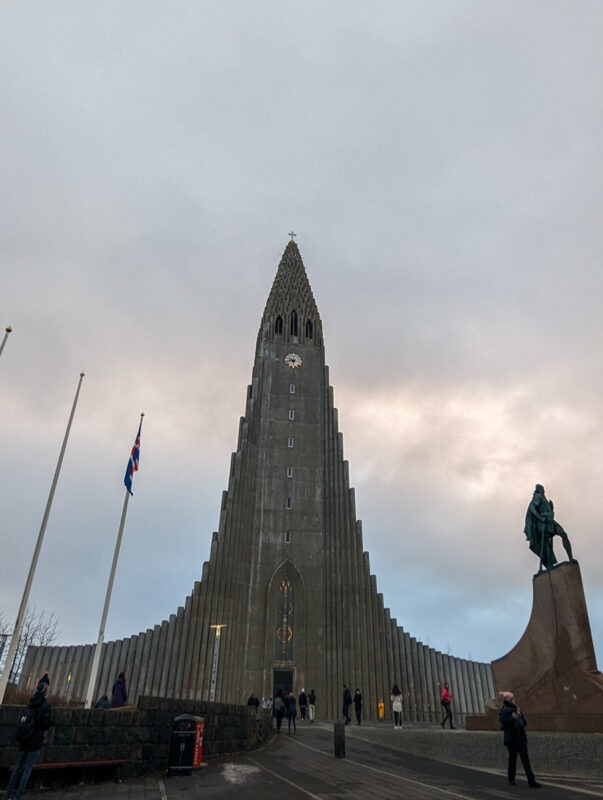
While Reykjavik is one of my favourite European city breaks, everyone should visit at least once, there are a few things to consider when here.
Cost
One drawback to Reykavik? The cost! You might have heard that Iceland’s a pricey place to visit, and the capital’s no exception.
The cost of living is quite high in Iceland, which means that dining out, accommodations, and even everyday items often come with a hefty price tag.
The solution? We made full use of our hotel’s breakfast, bought snacks from the supermarket to eat throughout the day and only went out for one meal per day. We didn’t drink out (unless it was included in a package) and instead took a couple of bottles of wine from home (if you’re flying with Jet2, they include baggage in all their packages!).
Also, favour cheap attractions like the thermal baths, free walking tour (although please do leave a tip) and the Hallgrimskirkja Church.
Over-tourism
Reykjavik’s rising fame as a travel hotspot brings its own set of challenges – largely, over-tourism!
This surge in visitors can sometimes crowd the city’s attractions and make it seem less authentic.
I tended to hit the popular spots early in the morning or later in the evening to dodge the crowds and explore lesser-known attractions like the public bathhouses.
Weather
And then there’s Reykjavik’s weather—where four seasons in a day isn’t just a saying, it’s practically a promise.
The city’s climate tosses up surprises that could see you basking in sunshine one minute and reaching for your raincoat the next!
It was around 0-5C when we were there recently in February, with quite a bit of grey skies and rain. On my first trip to Reykjavik, the temperature was lower – down to -10C, but the skies were clear.
Are you ready to visit Reykjavik?
Reykjavik is without a doubt worth spending some time in, and while Icelandic nature is epic, I think that you should totally spend a couple of days in the capital!

